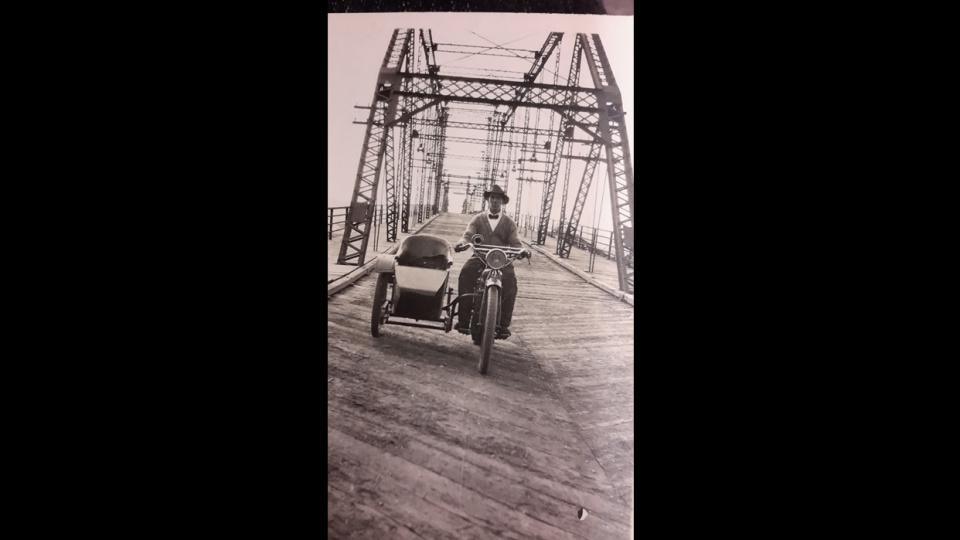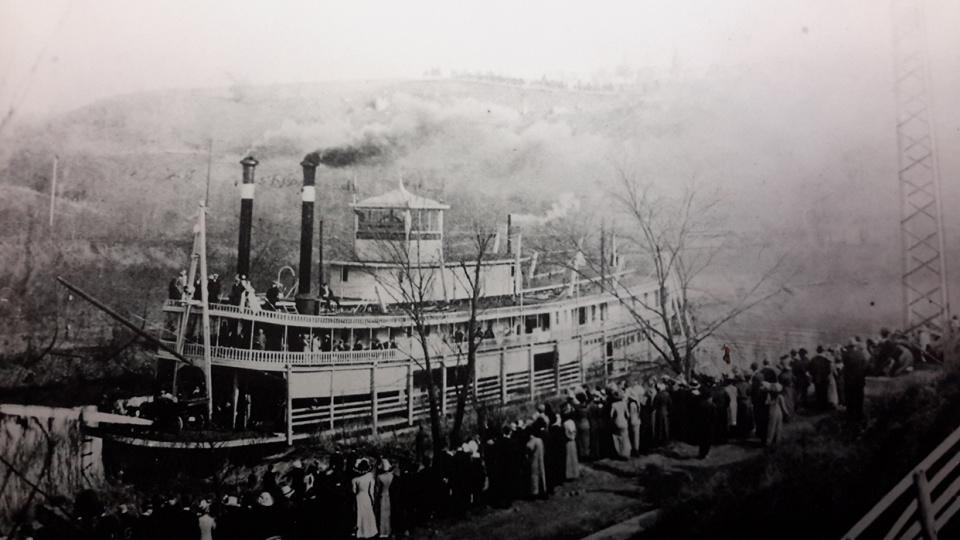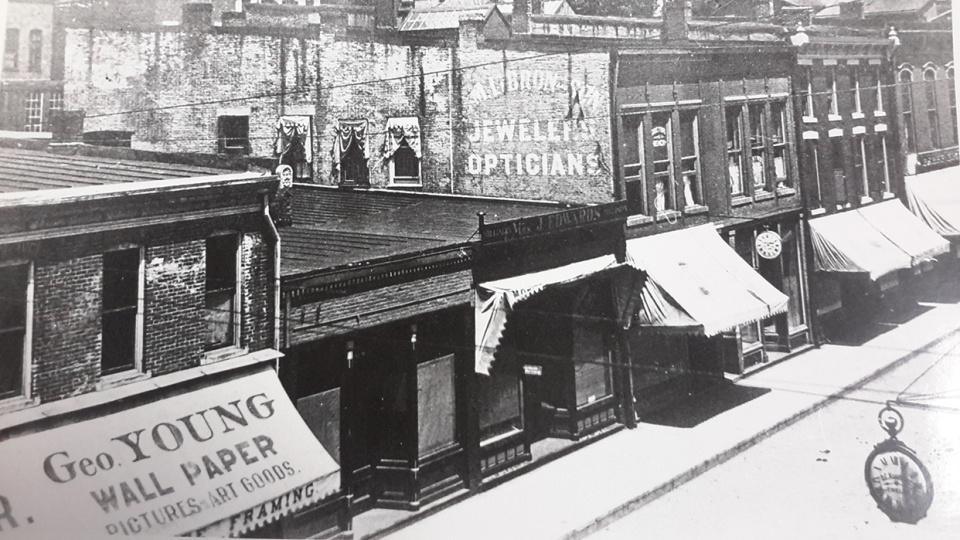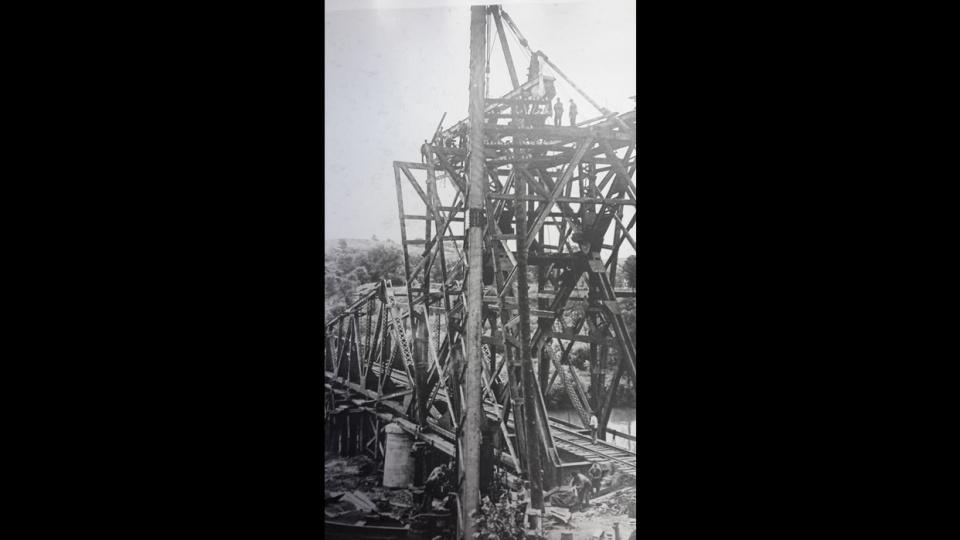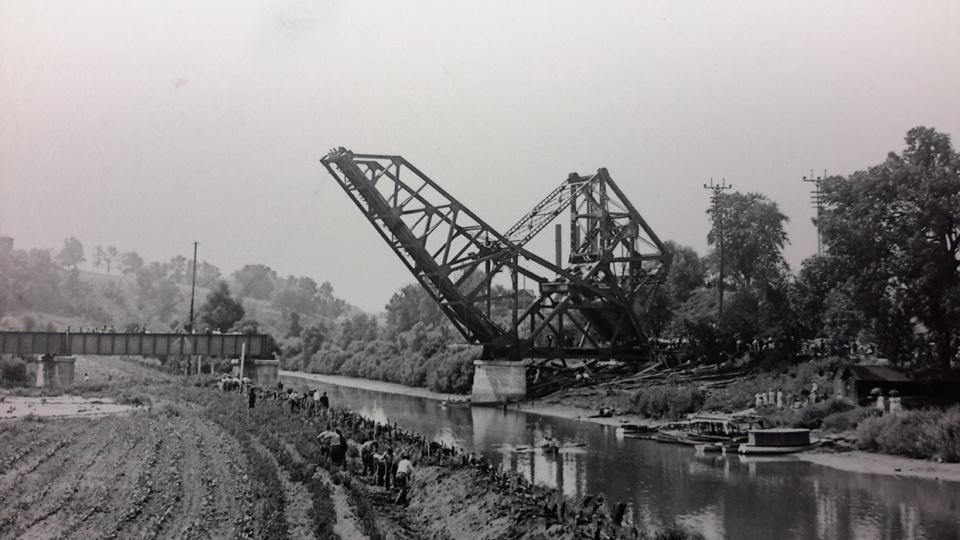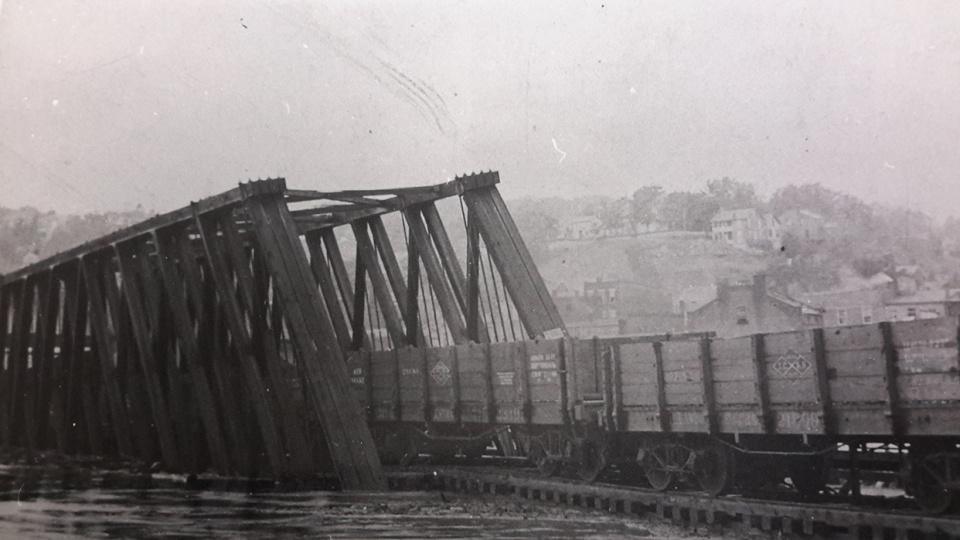The spring of 1828 saw 75 steamboat and 38 keel boat arrivals in Galena. Galena also saw its first serious flood, with steamboats floating down Main Street.
Galena’s levee was vivacious! Goods were constantly being dumped upon the levee by incoming steamboats; and a cargo of lead was soon loaded aboard each one, sinking the boat to her guards. Five steamboats heavily laden with lead left the city in one day during the month of March 1828.
The keelboats were used in order to facilitate the passage of steamboats over the rapids and also to increase their carrying capacity. These keelboats were fastened to the sides or bow of the steamboat, and while they impeded the speed and added to the difficulty of piloting, the disadvantages were more than counterbalanced by the additional cargoes carried. Almost all captains engaged in the lead trade made use of keelboats, especially when the water was low or when the amount of freight required an increase in the carrying tonnage. Early in the spring of 1828, a steamboat successfully towed two keels- of 40 tons burden—a feat heralded with joy by the St. Louis paper, which immediately urged the improvement of the rapids as a further aid to steam boating.
By the end of June, almost eight million pounds of lead ore were exported. This brought an influx of miners and merchants from all parts of the United States and the world. Galena was now the most important port north of St. Louis. The steamboats would ultimately help make Galena the wealthiest town in Illinois.
In 1828 the population of Galena was around 700. However, the population in the mining district, which included southwest Wisconsin, was estimated at 10,000!
On July 8, 1828 (more than five years before Chicago was born and could boast its first newspaper), citizens of Galena were reading the first issue of the Miner’s Journal.
When the season came to a close in 1828, almost 100 trips had been made up the Fever River!
There were times of financial distress as the price of lead fluctuated and rumors of Indian troubles surfaced.
Real fears were brought to the bustling settlement in 1832. To the south where the Rock River flows into the Mississippi, Sauk leader Black Sparrow Hawk led 1500 followers back into Illinois from Iowa to reclaim his ancestral homeland. Fears of war swept across the lead mining frontier. As a result, Galena built a stockade for protection. A Block House was built on the hill and an early log house, now called the Old Stockade, served as a refuge for women and children. (The Stockade will be featured on the Main Street Tour.)
During the ensuing Black Hawk War only six boats ventured above the Upper Rapids. The defeat of Black Hawk at Bad Axe in Wisconsin brought more promising conditions to everyone except the indigenous tribes, who were quickly moved to reservations west of the Mississippi. As a result the population of the lead mine district exploded as thousands of migrants poured in from all regions, including Europe.
The price of lead had risen considerably during this time. It was clear that the mining industry was the heart of the town. Galena was back on her feet again. It was estimated that during the 1830’s, four out of every five people in town were employed in connection with the mining industry.
Sometimes as many as 20 steamboats arrived in a week. It was common to see as many as ten boats docked along the banks on any one day.
A steamboat captain was often called a “king.” A pilot was a “prince.” The latter being known by an immaculate white ruffled and embroidered shirt front, a gay necktie, and a “sunburst” diamond pin, to which was attached a small gold chain with a plain gold pin to stick in the bosom for safety. The pilot’s pay was $300 to $400 per month, with one or two assistants and a “cub,” learning the river under him. When these distinguished men walked down the gang plank and stepped on shore, the ground trembled! All this activity made Galena the center of lively social life. The spirited dances, the open hospitality of the people, and the friendly hand of friendship that was extended without formality of convention to all comers gave this period the reputation that one pioneer lady described vividly, “A girl did not have to be beautiful or wealthy to be a belle. If she could ride, or dance, sing a song, laugh and be merry, she was sought after. We were a happy-go-lucky lot of youngsters among the hills in that old Galena town.”
In 1834 the first issue of the Galena Gazette was published; it is still in circulation today having the distinction of being the oldest weekly newspaper in continuous publication in the State of Illinois--being in circulation for 182 years as of 2016.
In 1836 and 1837, the town was surveyed and lots were sold, creating a construction boom. In 1841, Galena received its charter as a city, and the city government was organized in May.
Up to 1836 transportation was predominantly by water. However, that year, Frink, of the firm of Frink & Walker, sent the first stage coach from Chicago to Galena. The State ordered a survey of a wagon route between the two cities. Route 20 from Freeport to Rockford follows the old stage road. The grueling 200-mile run was made in one day--when conditions were good--over uncertain roads and bridgeless streams, with fresh horses every 13 miles; wayside inns served meals of bread, bacon, and coffee. The fare was $13.
The first railroad constructed out of Chicago, the Galena and Chicago Union, was chartered January 16, 1836, to connect Chicago with the lead mines at Galena. Plans started for the development of the Galena and Chicago Union Railroad Company. But it was a number of years before any track was laid, and, unfortunately, it never reached Galena--Running west from Chicago to Freeport.
By 1838, Galena was a hustling, bustling town. Perhaps a little too bustling since the Galena Temperance Society was formed to “combat excessive drunkenness” in the town’s saloons and “groceries.” There were 195 homes, warehouses, and shops in the city and another 46 were under construction. At the southern end of the city, only two streets were located between the river and the top of the bluff—Main and Bench Streets. Bench Street was reached from Main Street by flights of wooden steps.
Nearly 400 tons of lead left Galena in 1839-carried by the steamboat Ione and her three keelboats. Such cargoes often paid the cost of a steamboat in one round trip and helped to make up the deficit incurred when keels were sunk on the sharp-toothed rocks of the rapids. By the middle of the century, the keelboat was discarded and the barge took its place.














